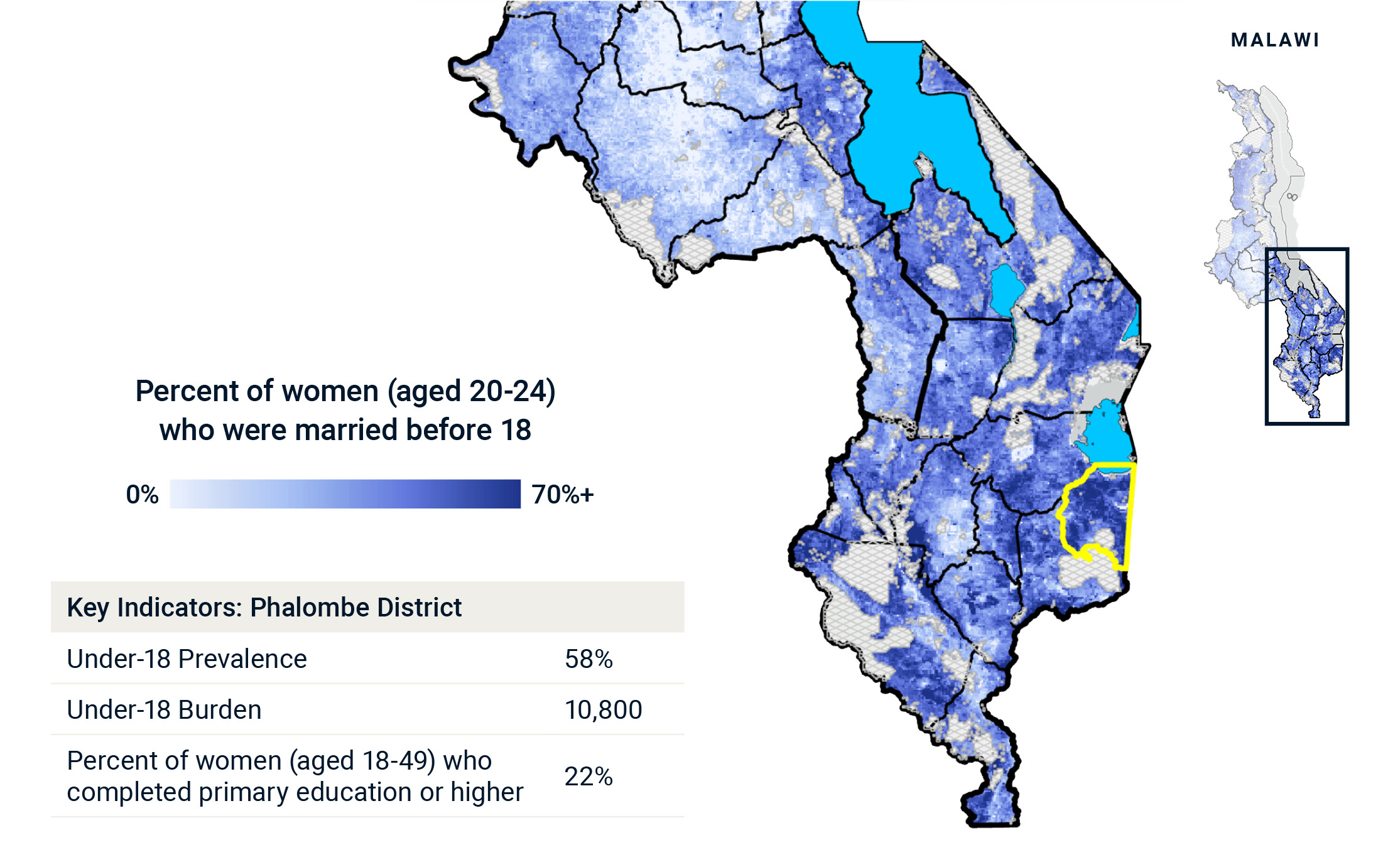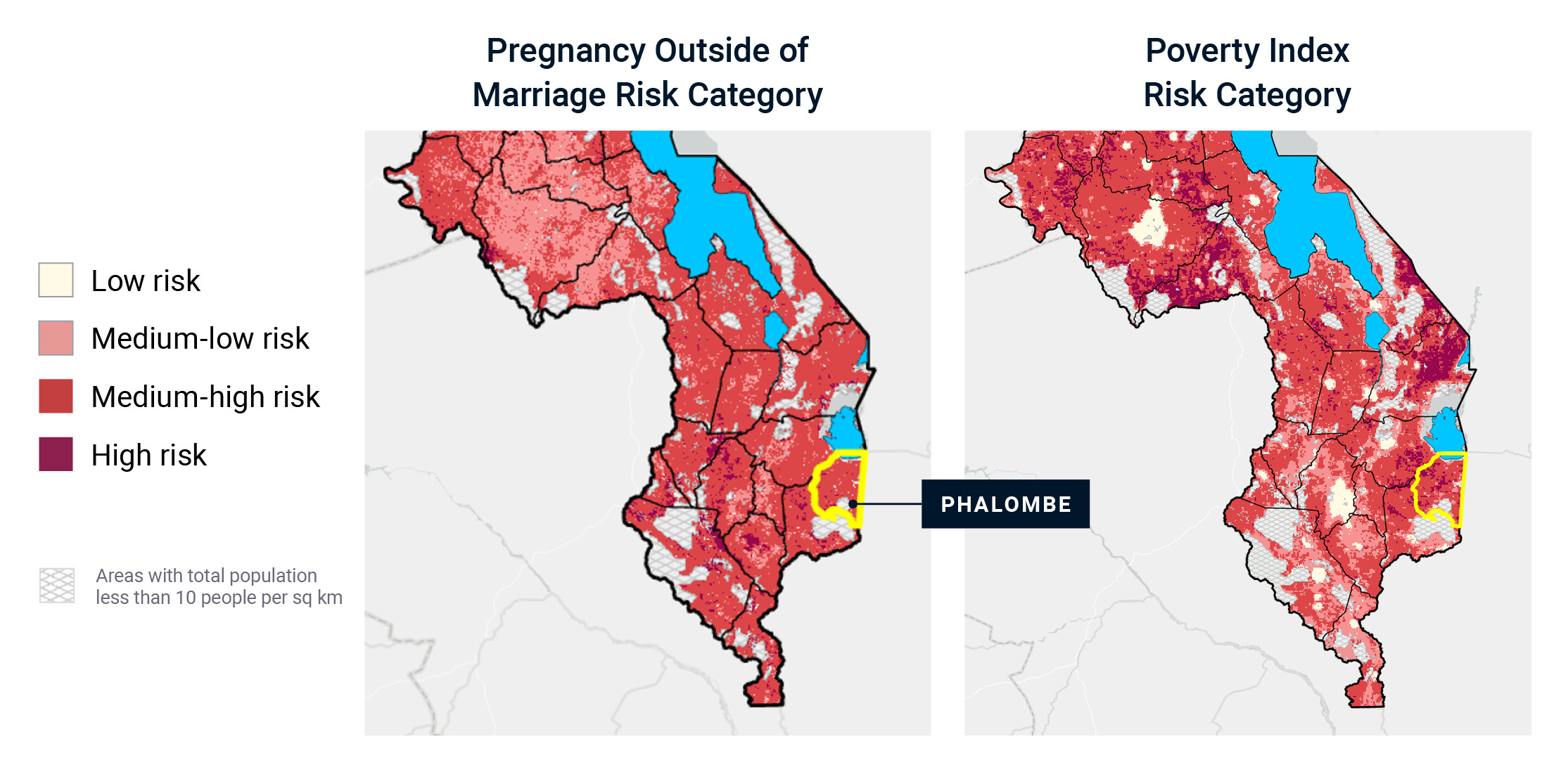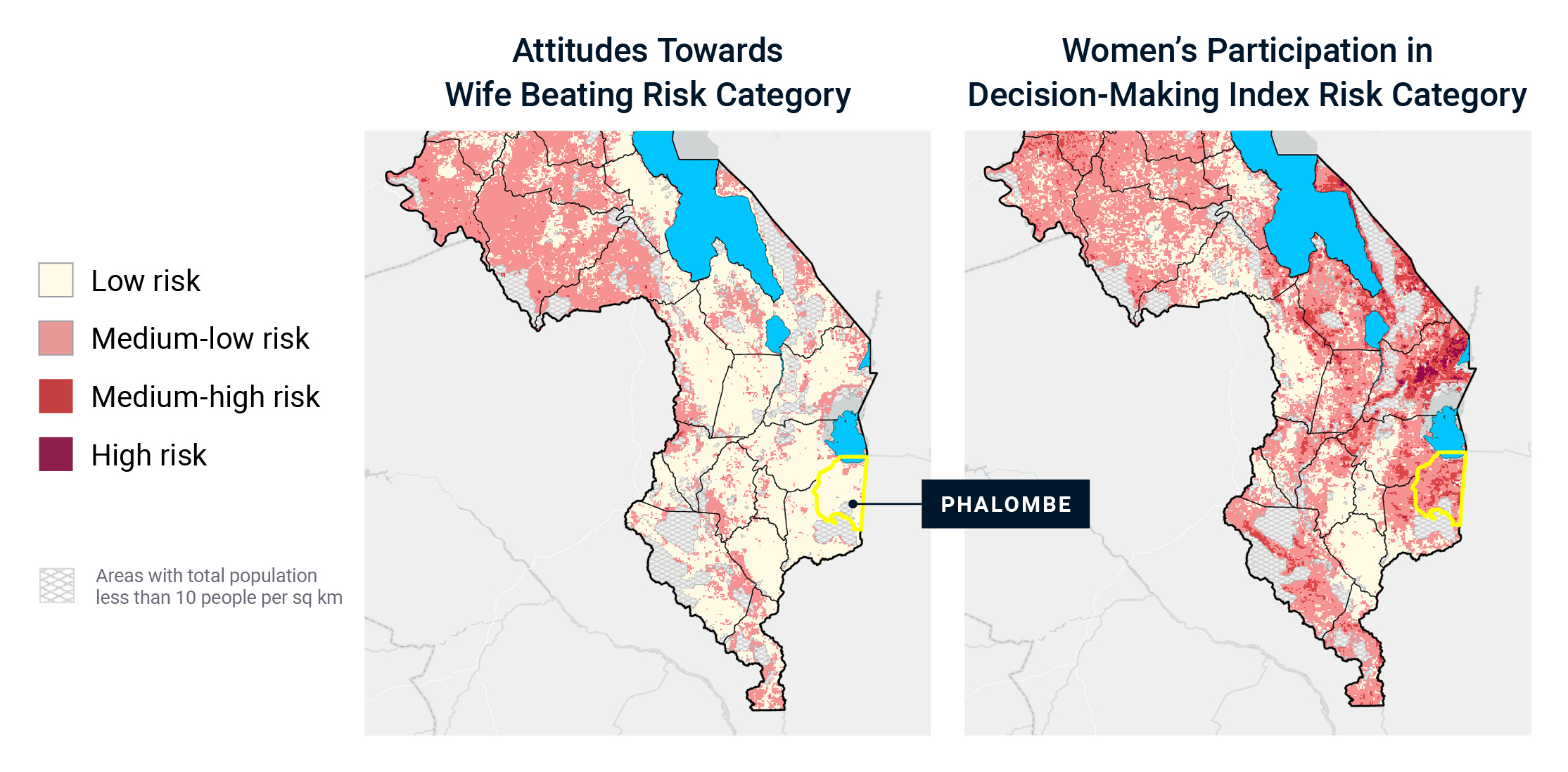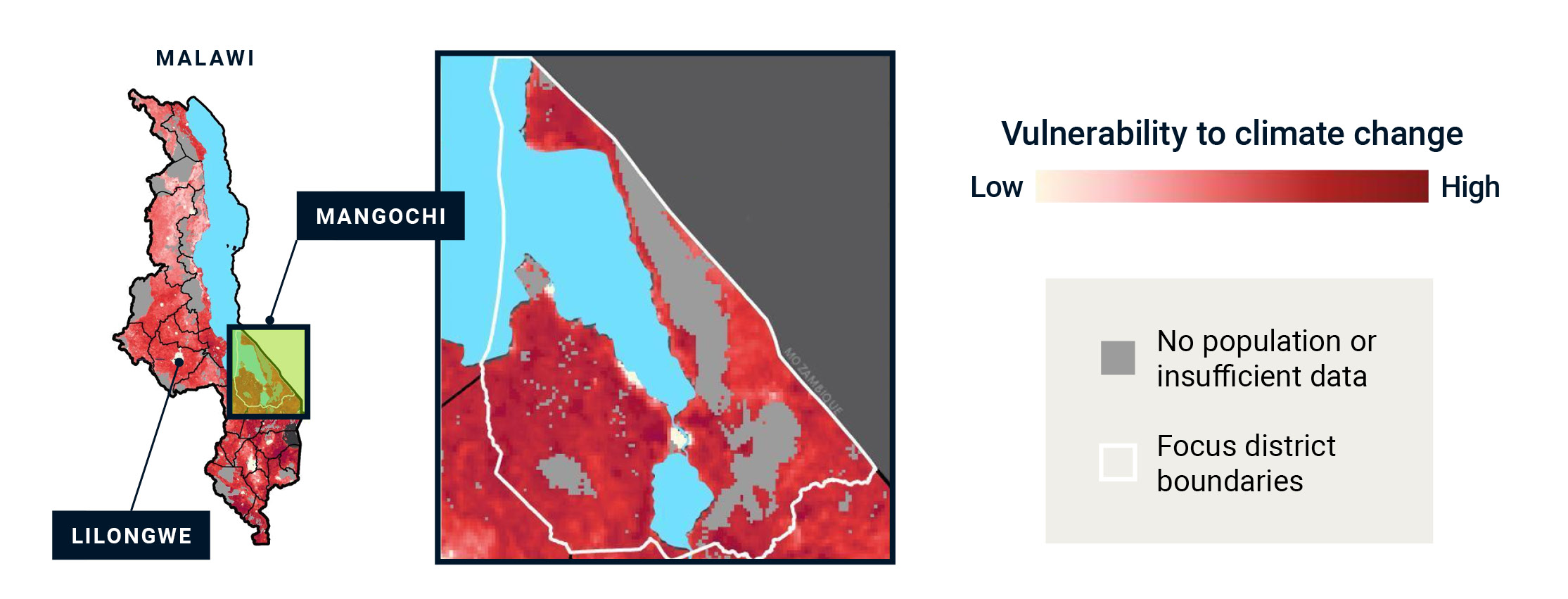Malawi’s Adaptive Capacity to Climate Change

Earlier this year, the United Nations Framework Convention on Climate Change (FCCC) released a synthesis report on the intersections of climate and gender vulnerability. Fraym data highlights many of the report’s findings at a neighborhood level, illuminating areas where gender inequality meets high climate vulnerability among their communities at large. Conversely, high adaptive capacity with climate change goes hand in hand with communities that enable women to be equal participants in decision-making, education, and employment.
We dove into Fraym’s community-level data on climate vulnerability and child marriage in Malawi to illustrate these spatial patterns.
The report notes that COVID-19 further limited the availability of sex-disaggregated data, already scarce before the pandemic. Fraym data can quantify many qualitative findings in the literature, including women’s household decision-making, child marriage, gender norms, and resilience.
Within these interconnected challenges, Fraym analysts examined data on child marriage, which the FCCC report attests can rise in the aftermath of a natural disaster as a coping mechanism for at-risk households.

In addition, Fraym mapped other indicators measuring gender vulnerability, including risks of pregnancy outside of marriage1, poverty2, attitudes towards wife beating3, and women’s participation in household decision-making4.


Our climate vulnerability index maps vulnerability to climate change in Malawi at the one-square-kilometer resolution, filling in the International Panel on Climate Change (IPCC) framework on exposure to climate shocks, sensitivity to those shocks once those occur, and adaptive capacity to respond. Fraym weaves over twenty environmental and human indicators together to produce a community-level portrait, scored from 0 to 100.

Fraym paired the climate index with our data on child marriage prevalence, burden, and risk factors to identify spatial overlap between climate vulnerability as defined by IPCC frameworks, and child marriage, a form of gender-based violence that the FCCC report identifies as a key example of intersections between climate and gender.
Two regions popped out that confirm the FCCC report’s thesis:
– In Phalombe, high vulnerability to climate change met high rates of child marriage as a case study in gendered vulnerability.
– In contrast, Rumphi district shows low vulnerability, higher education attainment for women, and reduced child marriage rates over time.
For these subnational areas, climate vulnerability mirrors gender vulnerability and vice versa.
High climate vulnerability, according to Fraym’s index, stems from high exposure, high sensitivity, and low adaptive capacity to climate shocks. Phalombe is the second-most vulnerable district in Malawi, driven by a high sensitivity and low adaptive capacity. These two factors intersect with gender vulnerabilities, drawing on indicators that improve with expanded gender equality: education rates, access to finance, poverty, female-headed households, and others. Phalombe’s low scores in both categories mirror the district’s highest prevalence of both under-18 and under-15 marriages in the country. Only 22% of women in this district completed primary education or higher, and over half (58%) were married before the age of 18.
Conversely, higher gender equality follows reduced vulnerability to climate change on Fraym’s index. Rumphi district in the north is the fifth least-vulnerable district, due in part to higher adaptive capacity. Women in this district have higher education attainment (66% have completed primary education) and some of the lowest child marriage rates that are decreasing over time (an 11-percentage point drop in under-18 prevalence from 2004 to 2016.)
Fraym data quantify at the community level what the FCCC report outlined at the global level: women increase the resilience and adaptive capacity of their communities when given equal opportunities and agency.
Communities are more vulnerable to climate change when inequality and gender-based violence prevent women from fully contributing to their communities’ decisions and well-being. Improving education rates for girls, decreasing child marriage, and improving women’s legal rights to access finance and own land, all collectively contribute to raising the adaptive capacity to climate change for their neighborhoods and their country as a whole.